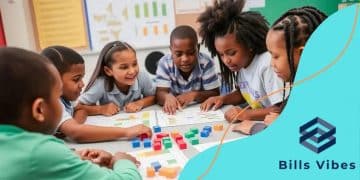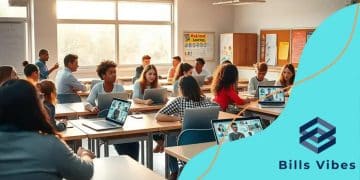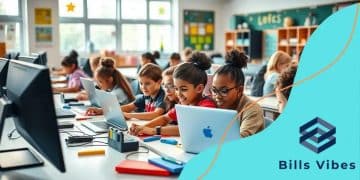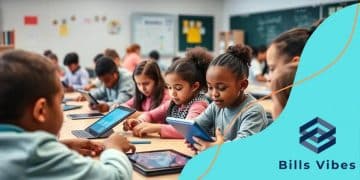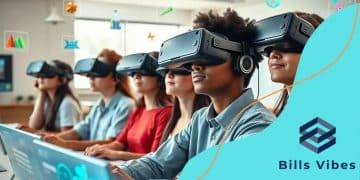Gamified learning for kids: fun ways to engage them
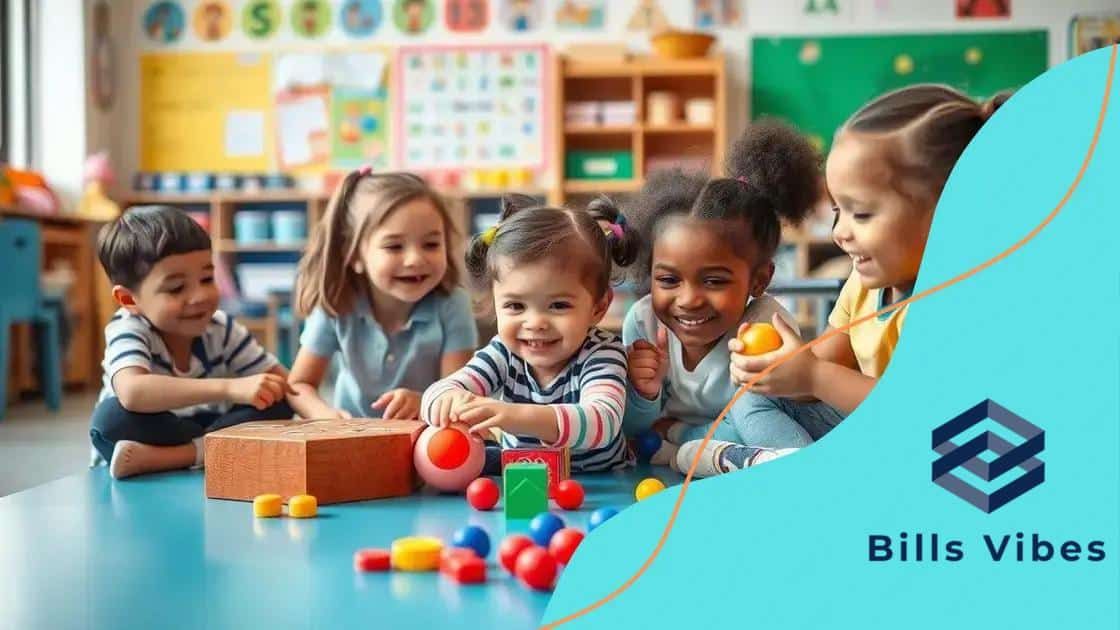
Gamified learning for kids involves incorporating game elements like points and rewards into education, enhancing engagement, motivation, and retention while making learning enjoyable and interactive.
Gamified learning for kids creates an engaging experience that makes education more fun. Have you seen how games can make learning exciting? Let’s dive into how this approach can transform the way children learn.
What is gamified learning?
Gamified learning is a teaching approach that incorporates game design elements into educational settings. It transforms traditional learning into an exciting game where students can interact and engage more deeply with the material. This makes learning not just a task but a fun adventure!
By using gamified learning, educators harness the ability of games to motivate students. When games are introduced into lessons, children are often more willing to participate and explore new ideas.
Key Features of Gamified Learning
Here are some important aspects that define this approach:
- Points and Rewards: Students earn points for completing tasks, which encourages them to engage.
- Levels: Progressing through different levels feels like an achievement and motivates continuous learning.
- Challenges: By adding challenges, students can test their skills and gain confidence.
- Immediate Feedback: Just like in games, students receive feedback right away, helping them improve quickly.
As children play and learn simultaneously, they develop critical thinking and problem-solving skills. Gamified learning also fosters teamwork through collaborative games, where kids learn to work together towards common goals.
This technique is particularly effective since many kids already love playing video games. With a familiar context, they approach learning with excitement. In a gamified environment, students are not just passive observers; they become active participants, which transforms the educational experience.
Overall, gamified learning is more than just fun; it enhances engagement and retention of knowledge in a vibrant way. It showcases how games can positively influence the learning journey for kids.
Benefits of gamified learning for kids
Using gamified learning for kids has many advantages that enhance their educational experience. This teaching method not only makes learning fun but also helps children develop important skills and behaviors.
One clear benefit is increased motivation among students. When learning feels like a game, kids are more eager to participate. They tend to focus better and stay engaged in the task at hand.
Key Benefits of Gamified Learning
Some standout benefits include:
- Improved Retention: Gamification aids memory by turning lessons into interactive experiences.
- Enhanced Problem-Solving Skills: Kids practice critical thinking as they face challenges in games.
- Collaboration: Many games encourage teamwork, helping children learn to cooperate and communicate with peers.
- Positive Feedback: Receiving immediate rewards and recognition boosts confidence and promotes a growth mindset.
Additionally, gamified learning fosters creativity. Kids have the opportunity to explore their imagination while engaging with educational content. This flexibility allows them to express themselves in new ways while reinforcing lessons.
For parents and educators, the interactive nature of this approach makes it easy to track progress. They can see how well children are grasping concepts based on their performance in game-like settings.
Moreover, gamified learning can be adapted for different learning styles. Whether a child learns best through visuals, sounds, or hands-on experience, there are games that can cater to those preferences. This inclusivity makes it easier to reach every child in the classroom.
Popular gamification techniques in education
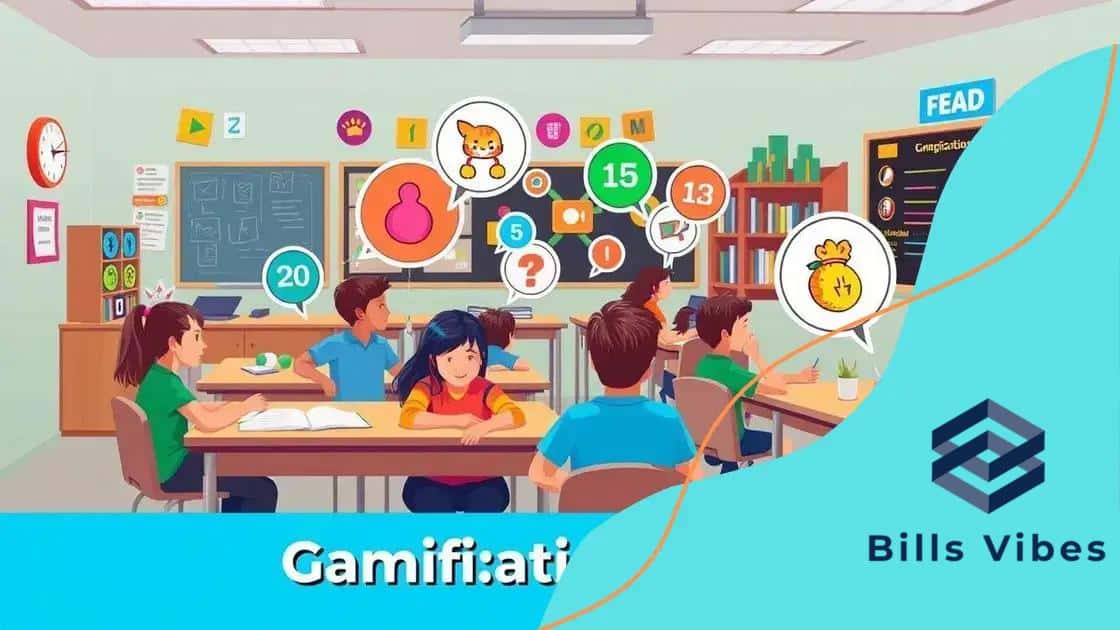
There are several popular gamification techniques in education that can engage students effectively. These strategies transform learning activities into game-like experiences, making education more enjoyable and productive.
One well-known technique is the use of points and leaderboards. Educators assign points for completing tasks or answering questions correctly, creating a competitive atmosphere. Students can see where they stand among their peers, encouraging them to strive for improvement.
Common Gamification Techniques
Here are some favorite techniques used within classrooms:
- Badges: Students earn badges for achievements, such as mastering a skill or completing a project. This motivates learners and provides recognition for their efforts.
- Challenge Quests: Assigning tasks as quests can make learning feel like an adventure. Students can work through levels, each with unique challenges.
- Instant Feedback: Gamification includes immediate feedback, which helps students understand their mistakes right away and encourages them to keep trying.
- Role-Playing: By taking on roles, students can immerse themselves in scenarios that relate to what they’re learning, enhancing their understanding through experience.
Additionally, incorporating game-based learning platforms has become increasingly popular. Tools and apps designed for educational purposes allow teachers to engage students through interactive games tailored to various subjects. This approach fosters a sense of community as students collaborate to solve problems.
Another technique is to create a game narrative. Crafting a storyline around lessons provides context to the material, making it more memorable. When students see their learning as part of a larger story, they are often more invested in the process.
How to incorporate gamified learning at home
Incorporating gamified learning at home can be a fun and effective way to support your child’s education. There are several creative techniques you can adopt to make learning exciting both for you and your child.
One simple method is to set up a reward system. You can give points for completing homework, reading books, or learning new skills. These points can then be redeemed for special rewards, like a fun outing or extra screen time.
Strategies for Home Gamification
Here are some practical ways to implement gamified learning at home:
- Create Educational Games: Design board games or card games that teach math, science, or language. This makes learning interactive and provides a great opportunity for family bonding.
- Use Technology: Leverage educational apps and websites that incorporate gamification principles. Many apps offer challenges and rewards that can keep your child engaged.
- Learning Challenges: Set up weekly challenges for your child. For example, they could try to read a certain number of books and earn rewards for their accomplishments.
- Incorporate Storytelling: Weave learning into stories where your child is the hero. This can increase interest and deepen their understanding of the material.
Additionally, make sure to celebrate successes together. Praise your child’s achievements and recognize their hard work. This positive reinforcement can encourage them to take learning seriously while still having fun. Whether it’s by creating a chart to track progress or setting up family competitions, these activities can help keep children motivated.
As you explore different gamified learning strategies, remember to adapt them to your child’s interests. Tailoring the approach to match their passions creates a more engaging experience. This way, learning becomes not just an obligation but an enjoyable journey.
Challenges and considerations in gamified learning
While gamified learning has many benefits, there are also challenges and considerations to keep in mind. Understanding these issues can help ensure a successful implementation of gamification in education.
One major challenge is ensuring that the games enhance learning rather than distract from it. It’s important to connect the game elements directly to educational objectives.
Key Challenges in Gamified Learning
Here are some common challenges and considerations:
- Overemphasis on Rewards: If students focus too much on earning points or badges, they may lose sight of the actual material being learned. It’s crucial to balance rewards with intrinsic motivation.
- Technology Access: Some families may lack access to the necessary technology to participate in gamified learning, creating inequality. Providing resources or alternatives for those students is essential.
- Varied Learning Styles: Not all students respond well to game-based learning. It’s important to offer multiple methods of engagement to meet different learning preferences.
- Implementation Costs: Developing effective gamified learning experiences can require time and resources. Educators should be prepared for this investment.
Additionally, some educators may struggle with their own comfort level in using games as a teaching tool. Training and professional development can help to ease these concerns. Teachers should be encouraged to explore and experiment with different approaches to gamification.
Tracking progress can also be a challenge. When using gamification, it’s important to have systems in place to assess and evaluate learning, ensuring that students are making real progress. This way, educators can provide targeted support where it’s most needed.
FAQ – Frequently Asked Questions about Gamified Learning
What is gamified learning?
Gamified learning is an educational approach that incorporates game elements, like points and rewards, to make learning more engaging for students.
How can gamification benefit my child’s education?
Gamification increases motivation, enhances retention of information, and fosters collaboration among students, making learning a fun and rewarding experience.
What are some common gamification techniques?
Common techniques include points systems, badges for achievements, challenge quests, and integrating storytelling to create a narrative around lessons.
What challenges should I consider with gamified learning?
Challenges include ensuring technology access for all students, balancing reward focus with intrinsic motivation, and tracking student progress effectively.

